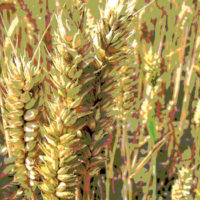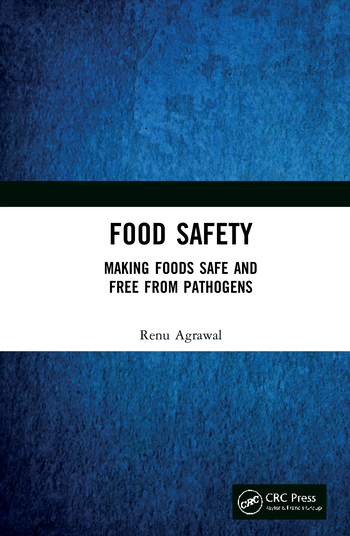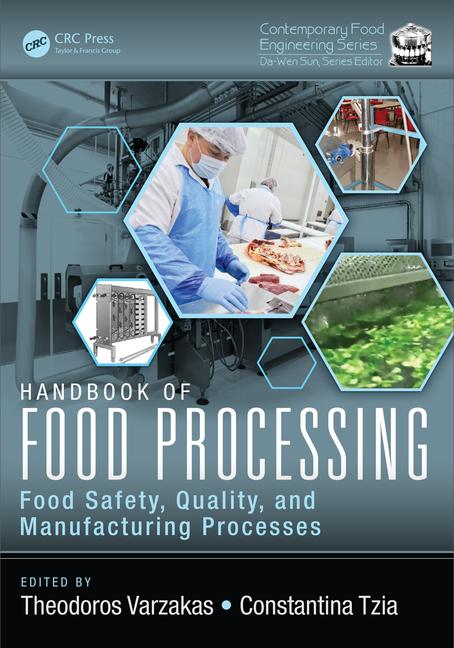Gluten-Free Update: What Food Processors Need to Know about Gluten-Containing Products

When the food label reads “gluten-free,” consumers expect that their food purchase will be safe to eat, especially if they have celiac disease, non-celiac gluten sensitivity or a wheat allergy. But an increasing number of studies, like the one in the Journal of Pediatric Gastroenterology and Nutrition,[1] report that mucosal recovery is lacking in 20 percent of the children diagnosed with celiac disease despite maintaining a gluten-free diet. Numerous patients in my practice with gastrointestinal disorders who were prescribed a gluten-free diet are complaining that the dietary change has made an insignificant difference in their symptoms.
What is Gluten-Free?
Gluten is a mixture of proteins (prolamins, gliadins, glutelins, glutenins) in wheat, barley, rye and possibly oats from cross-contamination. The U.S. Department of Agriculture (USDA) and United Nations Foods and Agricultural Organization have set the maximum limit for gluten in products labeled as gluten-free at 20 mg gluten/kg.[2] According to USDA data cited in Food Safety Magazine,[3] the top allergen recalls for 2015 were milk/dairy, peanuts, eggs and wheat/gluten.
An enzyme-linked immunosorbent assay (ELISA) is used to measure the amount of gluten and gliadins in foods but is less reliable for glutenins.[4] Many companies label products gluten-free and state “guaranteed to be gluten-free” based on the ELISA results, despite inadequate testing for all gluten-containing proteins. ELISA testing can only evaluate the alcohol-soluble gliadin but does not effectively assess the alcohol-insoluble glutenin fraction that can result in malabsorption symptoms occurring despite a gluten-sensitive patient following a gluten-free diet.
Celiac disease requires complete reduction of gluten to mediate inflammatory damage to the small intestinal mucosa, according to Joseph A. Murray, M.D., gastroenterologist at the Mayo Medical Center, Rochester, MN.[5] If that is not done, other disorders like type 1 diabetes and thyroid disease can result. Little is known about what causes the heightened immune response to gluten. Some researchers have speculated pregnancy, high-dose gluten challenge during travel or holiday feasting, or a viral infection may precede the onset of gluten enteropathy.[6]
Cheating on a gluten-free diet is highly discouraged for those with gluten intolerance but many find it difficult to accept the dietary restrictions. Therefore, the abundance of gluten-free products now available provides the opportunity for increased acceptance until symptoms do not recede. The American Journal of Clinical Nutrition[7] reports that teenagers find it difficult to follow the dietary restrictions, so when reducing gluten intake suppresses symptoms, they believe they are cured and continue to consume gluten.
Hidden Gluten
Better methods to determine the actual gluten content of gluten-free foods are still needed because small amounts of gluten can lead to unacceptable exposure in not only celiac patients but those with autoimmune disorders who are prescribed a gluten-free diet.[8]
Quinoa is a prime example of a food recommended on a gluten-free diet. Quinoa cultivars were tested according to a study[9] reported in the American Journal of Clinical Nutrition with 4 of 15 cultivars having celiac-toxic epitopes barely below the 20-mg/kg level that caused cytokine immune responses. As an Andean grain that tolerates extreme environmental conditions with a higher protein content than other cereal grains, its use in a gluten-free diet is now disputed.
Gluten intolerance does not cause anaphylaxis like peanuts or milk, but symptoms can last days or weeks after consumption. Allergic consumers rely on food labels to be clear and accurate. The reportable food and allergen-related recalls reported in Food Safety Magazine[10] listed milk, wheat and soy as major ingredients, with bakery products being the major food source. Wheat recalls are considered Class II, a package declares a product does not contain an allergen when that allergen is declared in the ingredient list. An example: The label reads gluten-free but the ingredient statement reads wheat starch.
Human studies have even shown antibodies to wheat germ agglutinin in the serum of healthy individuals.[11] Higher antibody levels to wheat germ agglutinin were measured in celiac disease patients.[12] The dose may be a significant factor in the inflammatory effects.
Gluten-free diets are being recommended for an increasing array of immune-related disorders, such as rheumatoid arthritis, irritable bowel disease, Crohn’s disease and Hashimoto’s thyroiditis. Glutenoids and lectins found in gluten-free products can influence development and/or exasperation of immune dysfunction. Improved testing and product formulation is needed to meet the needs of these patients.
Prolamins or Glutenoids
Prolamins or glutenoids are abundant in grains, legumes and pseudo-grains (quinoa, teff, millet, rice). Nutrition and food allergy education needs to change terminology from gluten to glutenoids in order to help people with celiac disease and grain sensitivities select healthy alternatives in their diet. Prolamins are not completely broken down during the normal digestive process. One hypothesis is that the components in prolamins are not compatible with human digestive enzymes that allow the release of amino acids from the food. Another consideration is that the seeds of psuedo-grains like quinoa contain protease inhibitors that stop digestive enzymes from breaking down the protein and these fragments travel through the digestive tract and across the gut barrier to damage the cell structure.
Flours from pulses—dry beans, peas, lentils, chickpeas—are increasingly being used in gluten-free products to increase protein and fiber content. But components of pulses can have negative impact on public health due to nonnutritive substances like phytates, oxalates, saponins, lectins and agglutinins.[13]
Lectins
Lectins are carbohydrate-binding proteins that resist digestion and can cause nutrient deficiencies, disrupt digestion and lead to intestinal damage. This damaging effect of lectins was discovered over 100 years ago.[14] According to Pusztai, senior research fellow of the Rowett Research Institute in the U.K., most plant-based foods contain lectins. The interaction between human consumption of these plants and digestive tolerance has evolved over thousands of years. Dietary lectins interfere with normal functioning of the digestive tract and can affect cell proliferation and turnover with serious consequences for growth and nutritional health. High rates of endocytosis by small intestinal cells have been reported for lectins of all types.[14]
Lectins from kidney beans interact with brush border enzymes to inhibit digestive peptidases and reduce the final stages of food protein degradation. The Handbook of Plant Lectins[15] identifies the foods that contain toxic lectins as members of the pea family: peanuts, mung beans, pigeon peas, soybeans, kidney beans, chickpeas, carob, green peas and yellow peas. Green beans, snow peas and snap peas are immature pea proteins and are usually tolerated because of their minor amounts of lectins.
Food sources of lectins can also be found in barley, oats, rice, rye, millet, wheat, teff, corn, kamut and spelt. Many gastroenterologists consider lectin sensitivity a major factor in irritable bowel syndrome, celiac disease and gluten enteropathy. Omitting toxic lectins—prolamins and agglutinins—can improve digestive wellness for anyone with gastrointestinal symptoms. The current focus on “going gluten-free” is a big step in digestive health, since gluten is the most widely recognized source of prolamins.
Agglutinins cause red blood cells and liquid particles to coagulate and form a thick mass that is helpful for a plant needing to survive against molds, fungi and insects, but can lead to resistance of digestive enzymes in humans.[16] With repeated consumption, these compounds can cause leaky gut and penetrate into the blood stream to cause autoimmune disease. Some agglutinins, such as ricin (from castor beans), is so toxic that as little as one milligram—the size of a grain of rice—inhaled or injected is deadly.[17]
Wheat germ agglutinin is the most studied lectin with proinflammatory responses causing histamine secretions, cytokine release of interleukin responses and inflammatory reactions, leading to leaky gut or increased epithelial cell permeability. The advent of genetically modified (GMO) seeds means more autoimmune disorders caused from prolamines, agglutinins and saponins than heritage seed crops grown before 1990.[17] Genetic engineering of seeds has made GMO crops more resistant to pests and increased yields while at the same time creating more digestive health issues for consumers.
Testing vs. Litigation
Not only is better testing needed for a declaration of gluten-free, but improved terminology can help consumers avoid misbranding that can lead to corrective and civil litigation. Food manufacturers need to formulate products with ingredients that are not harmful to the digestive process because autoimmune reactions are well documented in the medical literature.
Betty Wedman-St Louis, Ph.D., R.D., L.D., is a clinical nutritionist in private practice. She specializes in digestive diseases, cancer and metabolic disorders.
References
1. Leonard, MM et al. 2017. “Value of IgA tTG in Predicting Mucosal Recovery in Children with Celiac Disease on a Gluten Free Diet.” J Pediatr Gastroenterol Nutr 64(2):286–291.
2. www.acs.org/content/acs/en/pressroom/presspacs/2016/acs-presspac-october-12-2016/test-improves-detection-of-proteins-in-starch-aids-in-gluten-free-labeling.html.
3. www.food-safety.com/magazine-archive1/octobernovember-2016/ready-to-eat-foods-preserving-the-trust-of-the-consumer/.
4. Scherf, KA, et al. 2016. “Improved Quantitation of Gluten in Wheat Starch for Celiac Disease Patients by Gel-Permeation High-Performance Liquid Chromatography with Fluorescence Detection (GP-HPLC-FLD).” J Agric Food Chem 64(40):7622–7631.
5. Murray, JA. 1999. “The Widening Spectrum of Celiac Disease.” Am J Clin Nutr 69(3):354–365.
6. Smecuol, E, et al. 1996. “Gynecological and Obstetric Disorders in Coeliac Disease Frequent Clinical Onset during Pregnancy or the Puerperium.” Eur J Gastroenterol Hepatol 8(1):63–68.
7. Kumar, PJ, et al. 1988. “The Teenage Celiac: Follow Up Study of 102 Patients.” Arch Dis Child 63(8):916–920.
8. Koning, F, et al. 2013. “The Million-Dollar Question: Is “Gluten-Free” Food Safe for Patients with Celiac Disease?” Am J Clin Nutr 97(1):3–4.
9. Zevallos, V, et al. 2012. “Variable Activation of immune Response by Quinoa (Chenopodium quinoa Willd.) Prolamins in Celiac Disease.” Am J Clin Nutr 96(2):337–44.
10. www.food-safety.com/magazine-archive1/aprilmay-2014/learning-from-fda-food-allergen-recalls-and-reportable-foods/.
11.Tchernychev, B, et al. 1996. “Natural Human Antibodies to Dietary Lectins.” FEBS Lett 397(2–3):139–142.
12. Sollid, LM, et al. 1986. “Antibodies to Wheat Germ Agglutinin in Coeliac Disease.” Clin Exp Immunol 63:95–100.
13. www.ift.org/~/media/food%20technology/pdf/2016/06/0616_col_foodmedicinehealth.pdf?fullsite=true.
14. Pusztai, A. 1991. Plant Lectins- Chemistry & Pharmacology of Natural Products (Cambridge, Cambridge University Press).
15. Van Damme JM and WJ Peumans. 1998. Handbook of Plant Lectins: Properties and Biomedical Applications (Hoboken, NJ: Wiley).
16. d1ue90e5sp4tcv.cloudfront.net/828/images/Asset266215_v1.pdf.
17. Ballantyne, S. 2013. The Paleo Approach: Reverse Autoimmune Disease and Heal Your Body (Las Vegas, Victory Belt Publishing).
Looking for a reprint of this article?
From high-res PDFs to custom plaques, order your copy today!








